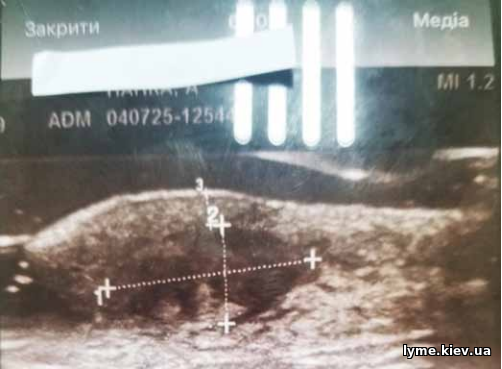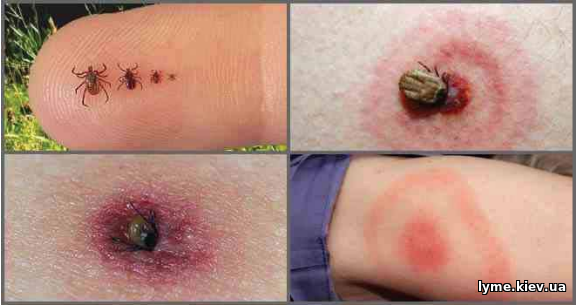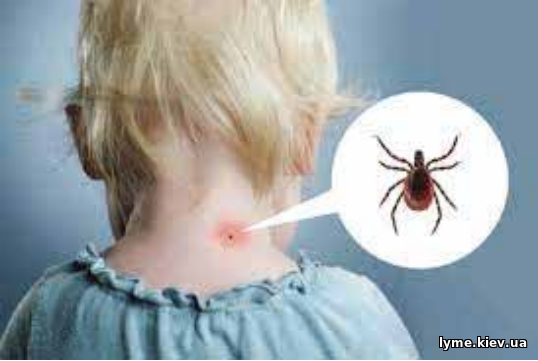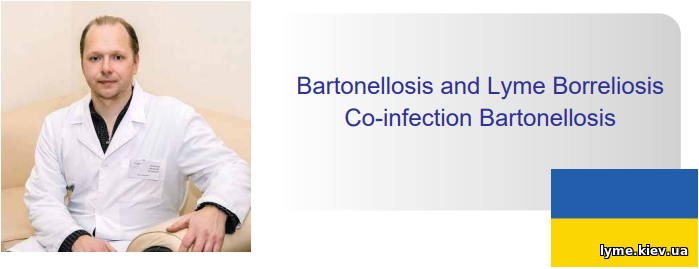1:06 PM Ко-інфекція Бартонельоза та Лайм-борреліоза |
Бартонельоз (Bartonellosis) Бартонельоз - це група інфекційних захворювань, що викликаються бактеріями роду Bartonella. Найбільш відомий вид — Bartonella henselae, який є збудником так званої хвороби котячих подряпин; (Cat scratch disease). Збудник: Бактерії роду Bartonella. Шлях передачі: Найчастіше передається через укуси, подряпини або контакт із слиною заражених тварин, особливо котів. Також переносниками можуть бути кровосисні комахи, такі як кліщі, воші, блохи. Симптоми: Лихоманка та загальна слабкість. Збільшення лімфатичних вузлів, особливо поблизу місця подряпини. Це є характерною ознакою захворювання. Місцеве почервоніння, висип або папула (невеликий горбок) на місці укусу або подряпини. Біль у суглобах та м’язах. Іноді може призвести до ураження внутрішніх органів. Лайм-бореліоз (Lyme borreliosis) Лайм-бореліоз, або хвороба Лайма, - це бактеріальне захворювання, яке передається через укуси кліщів. Це найпоширеніша кліщова інфекція в Північній півкулі. Збудник: Спіралеподібні бактерії Borrelia burgdorferi, а також інші види Borrelia. Шлях передачі: Передається через укус інфікованого кліща (особливо іксодового).
Симптоми: Характерна ознака: На ранній стадії захворювання на місці укусу кліща може з’явитися мігруюча еритема (еритема мігранс) - кільцеподібне почервоніння, яке поступово розширюється. Цей симптом спостерігається не у всіх. Лихоманка, головний біль, втома та озноб. Біль у суглобах та м’язах. На пізніх стадіях може призвести до серйозних уражень суглобів, нервової системи та серця. Кліничний випадок Цей випадок дійсно цікавий і він підіймає на зовні багато питань, які на мій погляд у майбутньому будуть актуальними, як колись ВІЛ, гепатит С, гепатит В та інші вірусні та бактеріальні інфекції. Нагадаю коротко пацієнтка А., 22 роки, звернулась до мене з високою температурою та тяжкою анемією, після переливання крові 200,0 мл в неїї гемоглобін з 64 г/л піднявся тільки до 74 г/л. Температура 39,0 °C тривала 7 діб, кожного дня в стаціонарі з ранку і в вечері при високій температурі вводили антипіретики. Хвора під лівою пахвою мала, щось схоже (див фото), на гігрому, яка формується, болюча, хірург не обачливо, без аналізів на фоні температури розрізав це утворення і випустив рідину, то на наступний день схоже утворення стало з’являтись з іншої сторони. Аугментин, який призначив хірург шостий день не працював - температура не спадала, стан був стабільно тяжкий. Лімфатичні вузли були дуже маленькі по шиї до 2,0 мм. Виходячі з клініки, епіданамнезу я поставив попередній діагноз Бартонельоз? тяжка форма, бабезіоз? Тяжка анемія. Спленомегалія. Гіпертермія. Призначив аналізи та лікування азітроміцином, моксіфлоксацином, тому що питання було складне і зволікати я не мав права. На фоні мого етіотропного лікування на другий день у вечері температура вище 37,1 °C не підіймалась. Потім на протязі тижня гемоглобін піднявся з 84,0 г/л до 99,0 г/л, хвора була з нормальною температурою тіла вже на третій день прийому азітроміцину, моксіфлоксацину (аугментин відмінили), потім виписана з лікарні з нормальною температурою тіла. Отримали позитивний аналіз на імуноглобуліни M до Bartonella henslae.
Діагноз піддтвердили. 12 день хвороби. Огляд повторний. Пацієнтка без температури, шкірні покриви мають більш природній відтінок. Антибіотики призначені мною приймає. Останній аналіз крові виглядає гемоглобін 99 г/л, гематокрит 34, середній об’єм еритроцита 67,4, середня концентрація гемоглобіна в еритроцитах гемоглобіна в еритоцитах 292 г/л (320-335), тромбоцити 437 х 109/л (156-400), лейкоцити 12,04 х 109/л (3,5-10), нейтрофіли 7,88 (1,6- 7), абсолютна кількість моноцитов 1,01 (0,2-0,8). РОЕ 35 мм.за год. (2- 15). Лейкоцитоз несподівано наріс за рахунок нейтрофілів (бактеріальна складова), РОЕ залишається високим, а температура впала і почав зростати гемоглобін, то можливо є ще одна бактеріальна гостра інфекція на яку не діють азітроміцин та моксіфлоксацин, я підозрюю, що в лісі її міг вкусити кліщ, а вона не помітила, але почервоніння були (зі слів пацієнтки), також не виключається, що там вона могла заразитися і на бартонельоз (грала з котами в лісу), або такий варіант в кліщах знаходять бартонеллу хенслае то логічно вона може передаватись і з укусом наприклад німфи кліща. Направляю пацієнтку А., здати вестерн блот на борреліоз М та G, перевірити IgG на бартонельоз, ще раз подивитись ПЛР на бартонельоз, бабезіоз, ерліхіоз, анаплазмоз. Вестерн блот на борреліоз зробили на 13 день хвороби аналіз на борреліоз Ig M позитивні: p31 OspA – 37+, p83 - 9, VlsE 11+ блот М 100% позитивний на борреліоз, Ig G OspC 23+ можна розцінювати як сероконверсію. Блот цей можна інтепретувати як гострий Лайм бореліоз. Діагноз змінюється Бартонельоз тяжкий перебіг, генералізлвана форма Ускладнення тяжка анемія (гемоглобін 64 г/л). Спленомегалія. Гіпертермія Супутній діагноз ко – інфекція Гострий Лайм борреліоз (рання диссемінована форма). Тепер лікуємо Лайм борреліоз. Висновок: при інфікуванні декількома бактеріями захворювання можуть протікати не типово та мати більш тяжкі ускладнення, як в нашому випадку, тому тяжкий перебіг потребує більш прискіпливого ставлення до діагностики. Янченко Віталій Кандидат медичних наук лікар вищої категорії, капітан медичної служби Віталій Янченко ЗС України в/ч А 0602 начальник медичної служби, засновник «ТОВ Медичний центр доктора Віталія Янченка», https://www.facebook.com/ianchenkovit/ [email protected] +380972871489 +380991247429
Bartonellosis is a group of infectious diseases caused by bacteria of the genus Bartonella. The most famous species is Bartonella henselae, which is the causative agent of the so-called cat scratch disease. Causative agent: Bacteria of the genus Bartonella. Transmission route: Most often transmitted through bites, scratches or contact with the saliva of infected animals, especially cats. Blood-sucking insects such as ticks, lice, fleas can also be carriers. Symptoms: Fever and general weakness. Enlarged lymph nodes, especially near the site of the scratch. This is a characteristic sign of the disease. Local redness, rash or papule (small bump) at the site of the bite or scratch. Joint and muscle pain. Sometimes it can lead to damage to internal organs. Lyme borreliosis Lyme borreliosis, or Lyme disease, is a bacterial disease transmitted by tick bites. It is the most common tick-borne infection in the Northern Hemisphere. Causative agent: Spiral-shaped bacteria Borrelia burgdorferi, as well as other species of Borrelia. Transmission route: Transmitted by the bite of an infected tick (especially an Ixodes tick). Symptoms: Characteristic sign: In the early stages of the disease, erythema migrans, a ring-shaped redness that gradually expands, may appear at the site of the tick bite. This symptom is not observed in everyone. Fever, headache, fatigue and chills. Joint and muscle pain. In the later stages, it can lead to serious damage to the joints, nervous system and heart.
Clinical case This case is really interesting and it raises many questions that in my opinion will be relevant in the future, like HIV, hepatitis C, hepatitis B and other viral and bacterial infections. Let me briefly recall that patient A., 22 years old, came to me with a high fever and severe anemia, after a blood transfusion of 200.0 ml, her hemoglobin from 64 g/l rose only to 74 g/l. The temperature remained at 39.0 °C for 7 days, every day in the hospital in the morning and in the evening at a high temperature, antipyretics were administered. The patient had something similar (see photo) to a hygroma under her left armpit, which was forming, so it hurt, the surgeon was careless, without tests on the background of the temperature, cut this formation and released the fluid, then the next day a similar formation began to appear on the other side. Augmentin, which the surgeon prescribed, did not work on the sixth day – the temperature did not drop, the condition was consistently severe. The lymph nodes were very small on the neck, up to 2.0 mm. Leaving the clinic, I made a preliminary diagnosis of Bartonellosis? Severe form, babesiosis? Severe anemia. Splenomegaly. Hyperthermia. I prescribed tests and treatment, because the issue was complex and I had no right to delay. Against the background of my etiotropic treatment, on the second day at dinner the temperature did not rise above 37.1 °C. Then, during the week, hemoglobin rose from 84.0 g/l to 99.0 g/l, the patient had a normal body temperature on the third day of my therapy (augmentin was canceled), then she was discharged from the hospital with a normal body temperature. Received a positive test for immunoglobulin M to Bartonella henslae. The diagnosis was confirmed. 12th day of illness. Repeated examination. The patient has no fever, the skin has a more natural shade. She is taking the antibiotics prescribed by me (azythromycini, moxifloxacini). The latest blood test shows hemoglobin 99 g/l, hematocrit 34, average erythrocyte volume 67.4, average hemoglobin concentration in erythrocytes hemoglobin in erythrocytes 292 g/l (320-335), platelets 437 x 109/l (156-400), leukocytes 12.04 x 109/l (3.5-10), neutrophils 7.88 (1.6- 7), absolute monocyte count 1.01 (0.2-0.8). ROE 35 mm.per hour. (2-15). Leukocytosis unexpectedly increased due to neutrophils (bacterial component), the ESR remains high, and the temperature has dropped and hemoglobin has begun to increase, so there may be another bacterial acute infection that is not affected by azithromycin and moxifloxacin, I suspect that a tick could have bitten her in the forest, and she did not notice, but there were redness (according to the patient), it is also possible that she could have contracted bartonellosis there (she played with cats in the forest), or this option is found in ticks Bartonella henslae, so logically it can also be transmitted with a bite, for example, a tick nymph.
I refer patient A. to take a Western blot for borreliosis M and G, check IgG for bartonellosis, and once again look at the PCR for bartonellosis, babesiosis, ehrlichiosis, anaplasmosis. Western blot for borreliosis was done on the 13th day of the disease, the analysis for borreliosis Ig M was positive: p31 OspA – 37+, p83 - 9, VlsE 11+ blot M 100% positive for borreliosis, Ig G OspC 23+ can be regarded as seroconversion. This blot can be interpreted as acute Lyme borreliosis. The diagnosis is changing Bartonellosis severe course, generalized form Complications severe anemia (hemoglobin 64 g/l). Splenomegaly. Hyperthermia Comorbid diagnosis co-infection Acute Lyme borreliosis (early disseminated form). Now we treat Lyme borreliosis. Conclusion: when infected with several bacteria, the diseaseinfections may not proceed atypically and have more severe complications, as in our case, therefore, a severe course requires a more meticulous approach to diagnostics. Ianchenko Vitalii Candidate of Medical Sciences Doctor of the highest category, Captain of the medical service Vitalii Ianchenko Ukrainian Armed Forces Military Unit A 0602 Chief of Medical Service, Founder LLC “Medical Center of Dr. Vitaliy Yanchenko”;, https://www.facebook.com/ianchenkovit/ +380972871489 +380991247429 |
|
|
| всього комментариев: 0 | |




